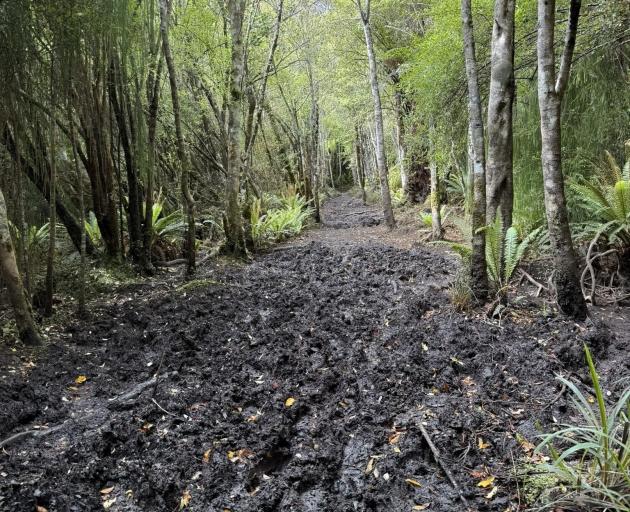
Details of the monitoring which took place during two weeks in May can be found on the Department of Conservation’s Conservation blog website.
About 300 trail cameras have been set up across 2300 hectares to record the presence of feral cats, rats and possums before, during and after the aerial 1080 poison operation.
Last year the Department of Conservation announced a two-phase operation to drop 1080 bait to reduce the feral cat population endangering the Pukunui/Southern NZ dotterel.
Phase one in about 6000 hectares of the island was completed earlier this month.
The cameras are set up from sea level at Doughboy Bay to up and over the tops of the Tin Range where one of the last pukunui breeding grounds is.
There are also cameras set up outside of the 1080 drop area to serve as a comparison.
A lure, often containing rabbit meat, is set up in front of the trail cameras which are programmed to take bursts of photographs when they sense movement.
On the blog it states the photographs show there are "lots of cats".
The Otago Daily Times asked if Doc knew how many cats were in the area and could it be the cats were featuring in more than one camera and being counted twice or more.
Doc Rakiura operations manager Jennifer Ross said the purpose of the monitoring was not count the number of pests.
"Our aim is to measure the relative abundance of feral cats, rats and possums in the operational area before, during and after predator control.
"This will help us to measure the results of the predator control operation."
The results of the monitoring were what was expected and are similar to the non-drop area at Ruggedy Range, she said.
Kiore, (Pacific rats) , Norway and ships rats feature in the photographs.
Rakiura Tītī Islands administering body member Tāne Davis said kiore were smaller and less common than ship or Norway rats but they still had major impact on insects, land snails, lizards, bats and smaller land and seabirds.
It is thought kiore arrived in New Zealand with the first Polynesians about 100 years ago, he said.
While Ngāi Tahu acknowledged the cultural importance of kiore rats to some groups its position as kaitiaki or guardians was to eradicate them, he said.
ZIP operations director Duncan Kay said Norway rats were a formidable predator.
"They can grow much larger than kiore and ship rats — up to 25 cm, including the tail."
They were also better swimmers and could easily swim 2km.
"While they’re not such good climbers as ship rats, they can still reach birds’ nests above the ground."











